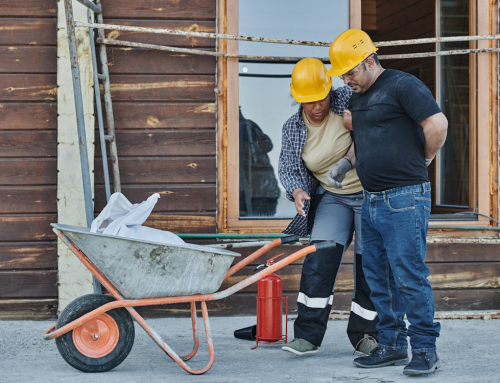Asbestos is a natural mineral. Due to its fibrous consistency, it is often used as an insulator in construction. Which begs the question—if it’s a building material, where has its notoriety come from?
Exposure to asbestos, even from a distance, can cause extreme damage to your lungs. Simply by inhaling the fibres, which are released freely into the atmosphere, you’re put at risk of lung cancer, asbestosis, and mesothelioma.
Metro Safety Training provides work safety training in BC that teaches students how to be aware of toxic substances in their homes and workplaces.
Why Is It Used in Building Materials?
In many countries, using this material, even in the internal structure of buildings, has been made unlawful. However, in British Columbia, it’s still in use. There are new protection laws in development for people exposed to it, but each year a hundred thousand people are thought to die from asbestos exposure.
Since it was used more commonly before people knew the associated risks, most buildings that contain it are still standing and occupied. At present, most contractors would avoid using it at all, but of course, not everything is recently constructed. Furthermore, the consequences of exposure often remain dormant for decades.
How Will I Know If I’ve Been Exposed?
Brief asbestos exposure may leave you unharmed, but inhaling the fibres for an extended time leads to lung scarring. Here are some of the apparent symptoms:
Trouble Breathing
If you find yourself short of breath frequently after little to no physical exertion, that indicates a problem.
A Cough That Won’t Go Away
If you’ve tried medication but your cough has been lingering for over two weeks, then something bigger than a simple infection is at play.
Wheezing
If simple activities like climbing a single flight of stairs have you in wheezing fits, then that’s a cause for concern.
Unrelenting Fatigued
If you feel consistently lethargic and it doesn’t improve with time.
Chest Pain
A sharp pain in your chest that gets worse when you breathe deeply.
How Will I Know If I Should See A Doctor?
If you are experiencing any of the above-mentioned symptoms, and you can’t find any obvious causes, then you should see a doctor immediately. Depending on your lifestyle, it might be difficult to track down where you were exposed. Still, a physician will be able to confirm if what you’re experiencing is indeed asbestos exposure.
They will do this with several tests such as chest X-rays, lung scans, and lung function tests.
These symptoms are known for being ignored until they have developed into something serious. This is in part due to a lack of awareness about toxic substances.
At Metro Safety Training in BC, along with our asbestos exposure courses, we have also collaborated with the Canadian Red Cross and Work Safe BC to develop comprehensive safety training programs. By picking up a Workplace Safety Course, an AED Course, or basic life support training, you can keep yourself and the people around you safer. Call us at 604-521-4227 to start being more aware of potential hazards in your environment.







